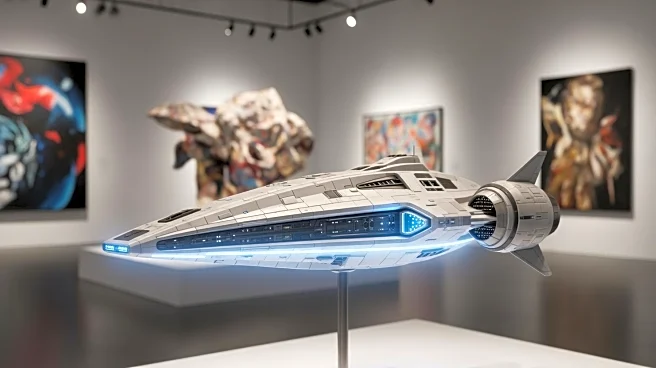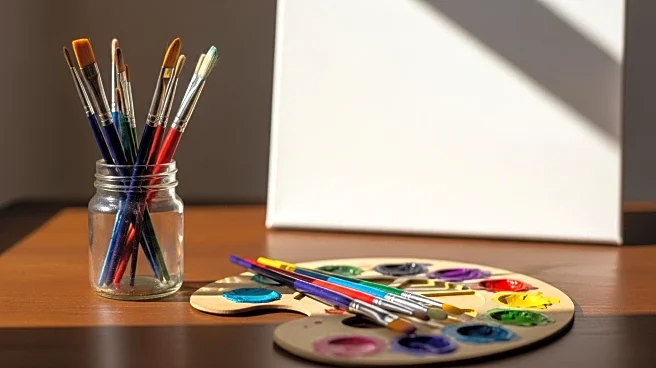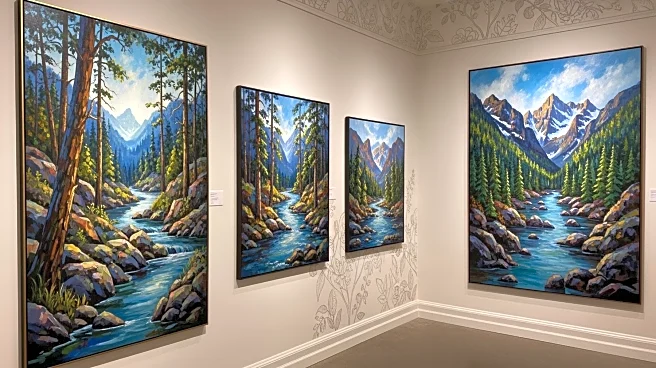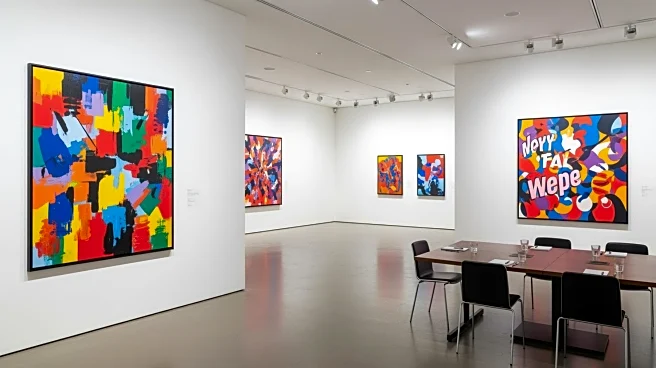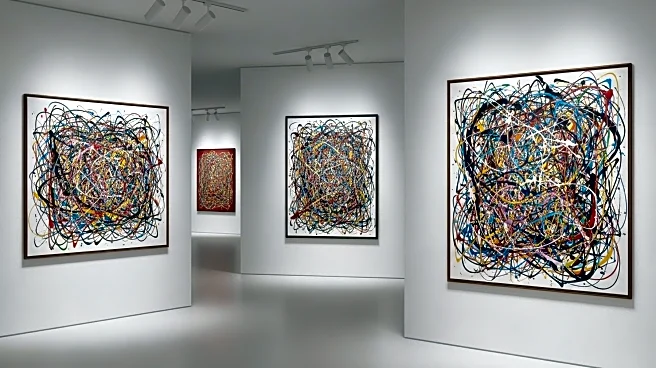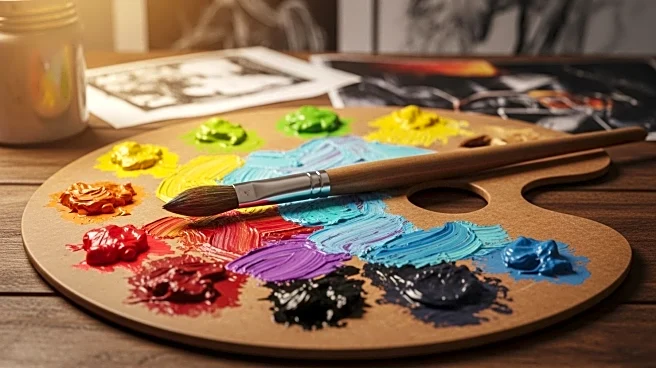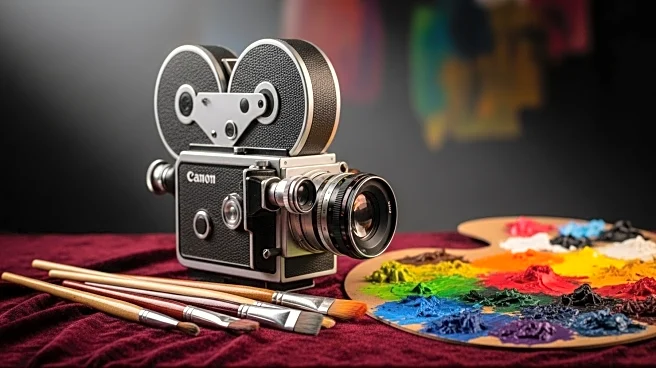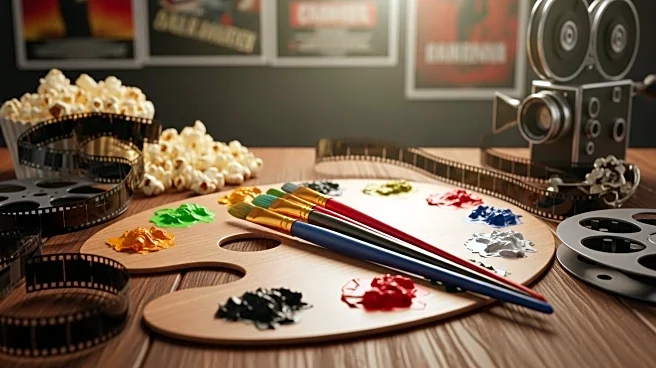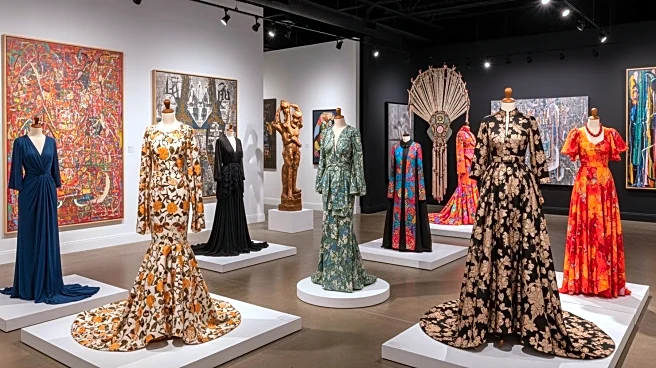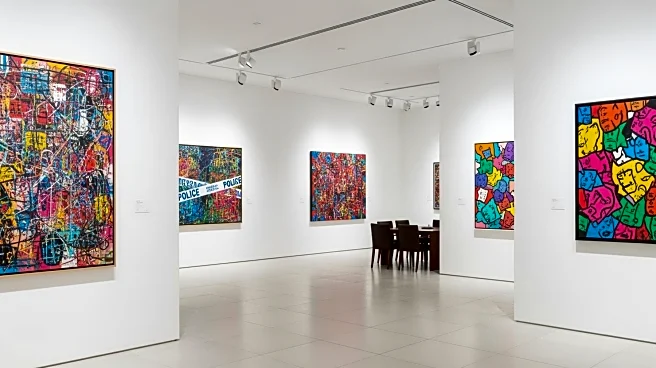What's Happening?
The Lucas Museum of Narrative Art, spearheaded by George Lucas, is set to open with a diverse collection of over 40,000 pieces, including works by Norman Rockwell. Despite Lucas's insistence that the museum is not solely dedicated to Star Wars, it will
feature a gallery showcasing Star Wars vehicles. Lucas, who has taken on the role of curator, aims to highlight a wide range of narrative art, from ancient cave paintings to futuristic fantasy. The museum's galleries will explore themes such as family, love, work, and play, with the Star Wars exhibit being just one of 33 galleries.
Why It's Important?
The inclusion of a Star Wars exhibit in the Lucas Museum of Narrative Art underscores the cultural impact of the franchise and its role in narrative art. This move is significant for fans and collectors, as it bridges the gap between popular culture and traditional art forms. The museum's broader focus on narrative art highlights the importance of storytelling in society, offering a platform for diverse artistic expressions. The decision to feature Star Wars reflects the franchise's enduring legacy and its ability to unite and divide audiences, showcasing its relevance in contemporary art discussions.
What's Next?
The Lucas Museum of Narrative Art is scheduled to open in 2026, with further details about its exhibits and opening date expected to be announced. As the museum prepares to launch, it will likely attract attention from art enthusiasts, Star Wars fans, and cultural commentators. The museum's approach to narrative art may influence future exhibitions and discussions around the role of storytelling in art. Stakeholders, including artists, collectors, and fans, will be keen to see how the museum balances its diverse collection with the iconic Star Wars franchise.
Beyond the Headlines
The Lucas Museum's focus on narrative art raises questions about the evolving definition of art and its intersection with popular culture. By including Star Wars, the museum challenges traditional art boundaries, inviting dialogue on the legitimacy of pop culture as art. This development may inspire other institutions to reconsider their approach to narrative art, potentially leading to a broader acceptance of diverse artistic expressions. The museum's emphasis on storytelling highlights the ethical and cultural dimensions of art, encouraging visitors to reflect on the stories that shape society.
